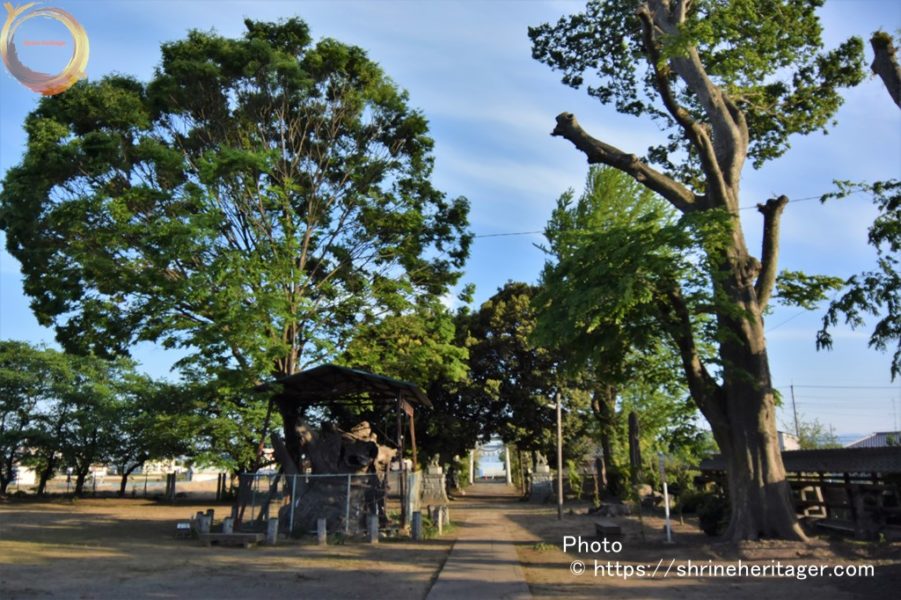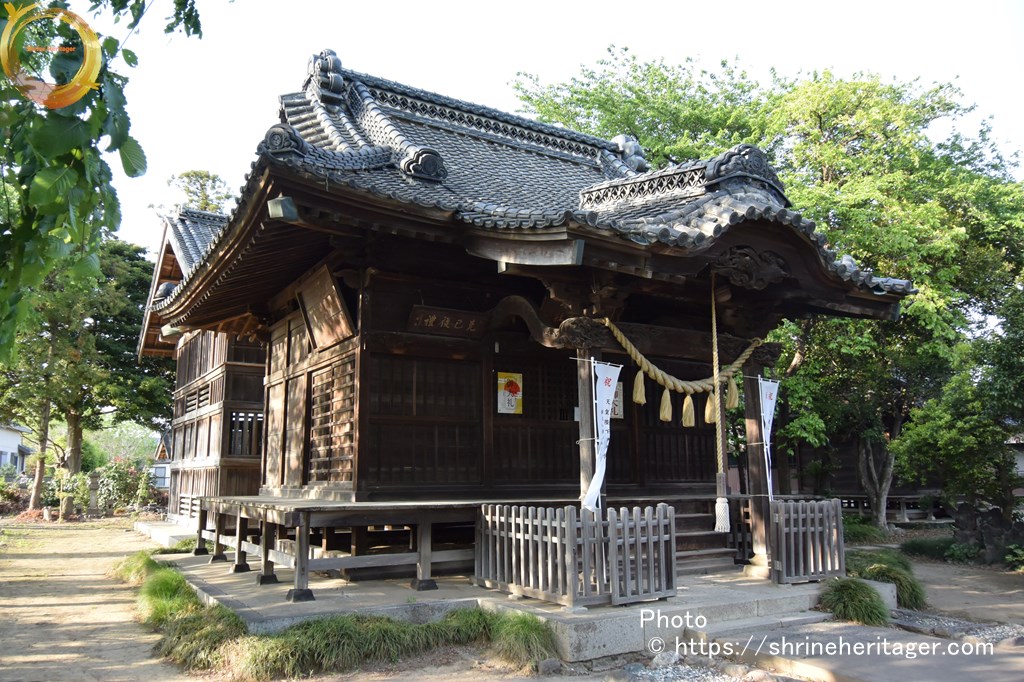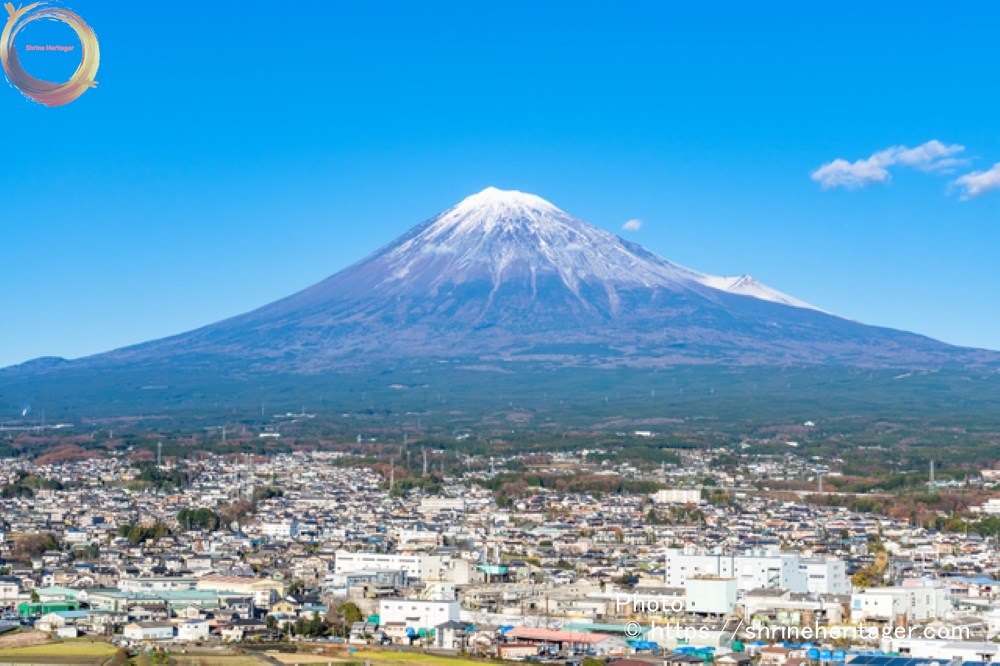Kashima Shrine is said to have been built in the Tengyo era (938-947). It is now a dead tree, but there was a zelkova tree with a trunk circumference of about 10 m, which was once considered a sacred tree, and it is said that sacred water was springing up at the base of the large tree. A communal bath was set up at this well, and it is said that Eiichi Shibusawa's mother, Sakae, took it and shed the back of a leprosy patient. In the hall of worship, a flat frame written by Eiichi Shibusawa is displayed, and it is an old shrine related to Eiichi Shibusawa.
目次
- 1 1.ご紹介(Introduction)
- 2 この神社の予備知識(Preliminary knowledge of this shrine)
- 3 【オタッキーポイント】(Points selected by Japanese Otaku)
- 4 神社にお詣り(Pray at the shrine)
- 5 神社の伝承(Old tales handed down to shrines)
- 5.1 About the well which is said to have sprung up from the cavity of a large tree of the persimmon which is said that eiichi Shibusawa's mother "Ei" draws the divine water and sheds the back of the patient
- 5.2 The good luck of the shrine is about this big tree.
- 5.3 According to the tradition of the shrine
- 5.4 The "Musashikuni-no-Shimomura Kashima Shrine Namai Bathing House Figure" distributed to generals during the Edo period was re-published in April 1868.
1.ご紹介(Introduction)
The official name of this shrine and how to be called The present address and map I will introduce the history of the god and the shrine enshrined.
【神社名(shrine name)】
鹿島神社(kashima shrine)
(かしまじんじゃ)
[通称名(Common name)]
【鎮座地 (location) 】
1145 Shimotebaka, Fukaya City, Saitama Prefecture
[地 図 (Google Map)]
【御祭神 (God's name to pray)】
《主》武甕槌尊(takemikazuchi no mikoto)
【御神格 (God's great power)】
・武門の守護 Guardian of the warrior
【格 式 (Rules of dignity) 】
【創 建 (Beginning of history)】
Founded in the Tengyo era (938-947)
鹿島神社(kashima shrine)
The founding date is unknown
It is said that "Taro Takebori", a vassal of Minamoto no Tsunemoto, was enshrined in this area during the revenge of Taira no Masakado in the 10th century.
Since then, it has been regarded as a guardian of warriors, and it is said that God helped the Takehoro battle during the Genpei era.15th century, 7,000 horsemen such as Noriyoshi Uesugi (Mr. Uesugi Fukaya) took a prayer to our company from the area around Takise Mokusai.
The deity is 武甕槌命Takemikazuchi.
The main shrine was built in 1810
The hall of worship is in the 14th year of the Meiji era.Keyaki in the precincts is hollow and has a well at the bottom, and was designated as a natural monument, but it is now dead.
A monument to honor the great achievements of Atsutada Odaka was erected in the precincts of 1891.March 1985 Fukaya Uesugi Awards (No. 22)
From the precincts guide board
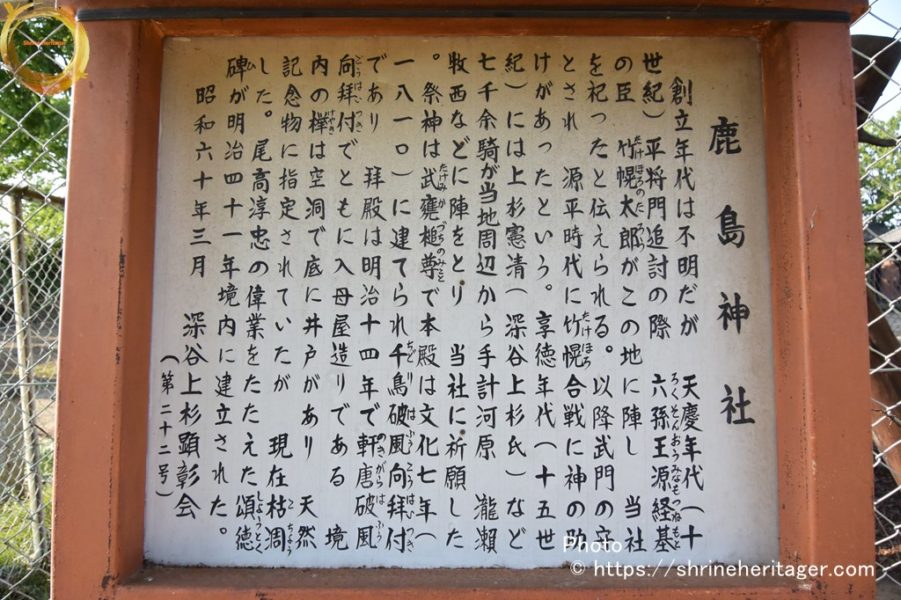
【由 緒 (history)】
It is a guardian shrine of Shimotebaka, and a monument to honor the achievements of Ranka Odaka, the teacher of Eiichi Shibusawa, is erected in the precincts. The amount of this monument is based on the text of Tokugawa Yoshinobu and Dr. Takeshi Mishima (No., Nakasu).
Although it is now Kutsuki, it is still a sacred tree with a soul of wood, and a powerful bark bump rises from the trunk to the root.
A communal bath was set up with the sacred water that springs up at the base, and Eiichi's mother, Sakae, took it and shed the back of the leprosy patient.From the Saitama Shrine Office website
【境内社 (Other deities within the precincts)】
Parallel to the right toward the main shrine
・八坂神社(yasaka shrine)
《主》素盞嗚尊(susanowonomikoto)
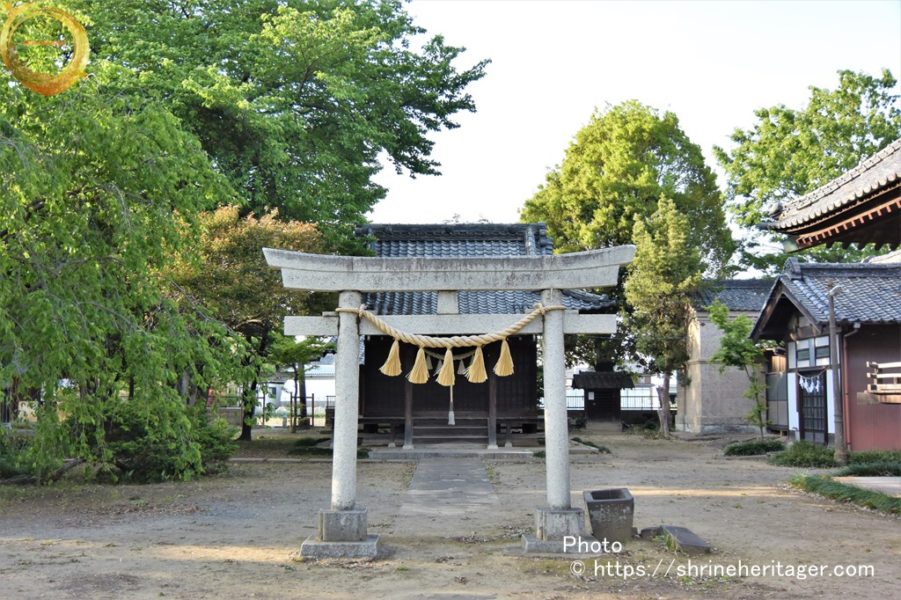
The back of Yasaka Shrine
・手計不動尊(tebaka fudoson)
《主》不動明王(fudo myoo)
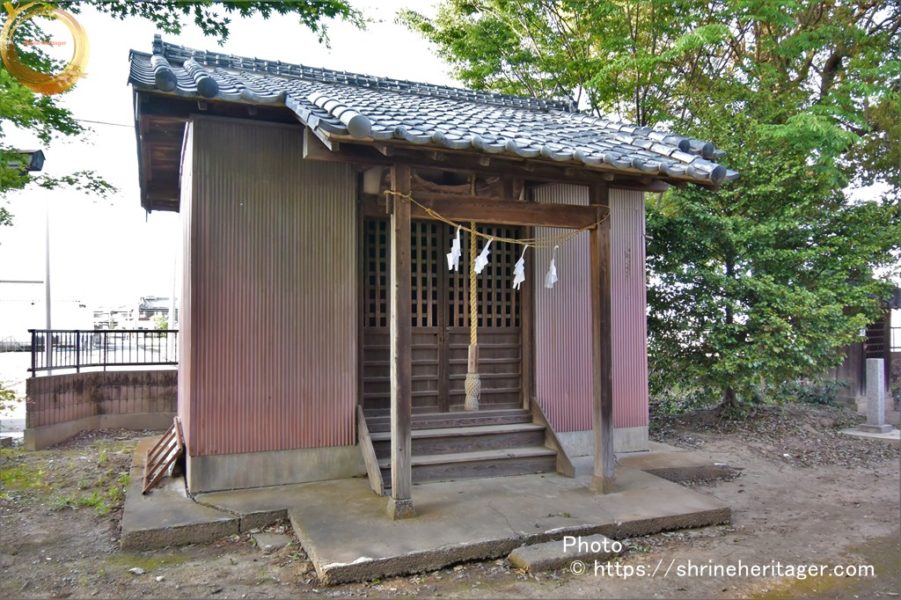
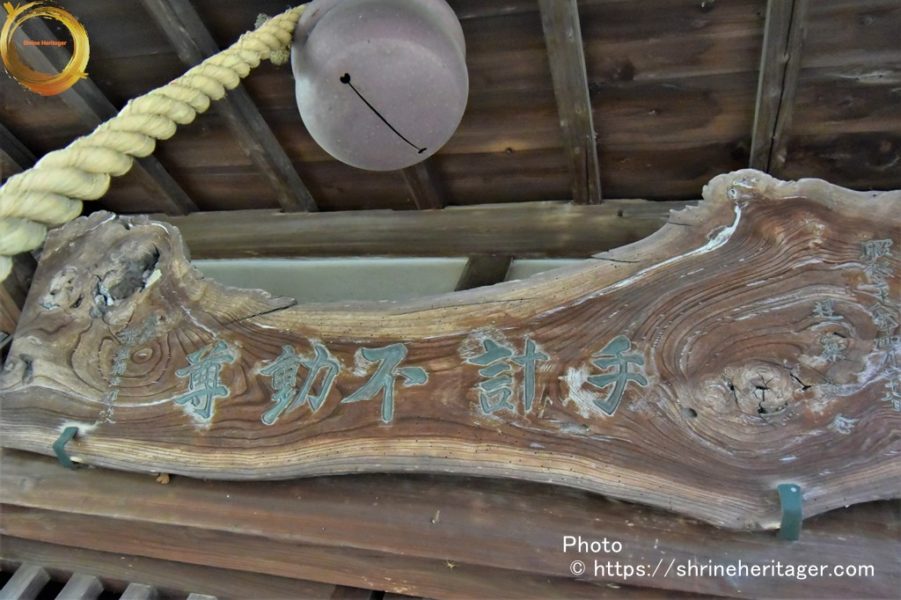
Behind the main shrine
・香取神社(katori shrine)
《主》経津主命(futsunushinomikoto)
・三峰神社(mitsumine shrine)
《主》伊弉諾神(izanagi no kami)
伊弉冉神(izanami no kami)
スポンサーリンク
この神社の予備知識(Preliminary knowledge of this shrine)
This shrine has a long history.
Kashima Shrine, which sits in the Shimotebaka area, is located in the southwestern direction of Nakase Shrine and is the guardian shrine of Shimotebaka.
About the founding of our company. There are two possible reasons.
First of all, the land of Nakase, which is adjacent to this area, faces the Tone River, and there was a ferry port that once corresponded to the passage of the Hokuetsu Kaido, which is the Kamakura Kodo, and there was a riverbank related to the Tone River's shipping. It can be seen from this that it was a key point. Against this background, it is theorized that the villagers involved in the Tone River's boating devoted themselves to the god of Kashima Jingu in Ichinomiya, Hitachi Province, which they usually worship as the god of voyage safety.The second is "Kashimasha" in villages such as Shimotebaka, Oki, Tomori, Uchigashima, and Tanaka (small letters in Ise), which are said to have been the territory of Kashimadai Shrine, which was once enshrined in the neighboring village of Otsukajima. Is enshrined. From this, it is the theory that our company received a spirit from this Kashimadai Shrine in the past.
In any case, since the textbook of Mr. Ashikaga Motouji, Kantō Kubō, states that in 1363, the ruins of the Shinano Irido territory and the land of Shimotebaka will be given to Naokuni Iwamatsu, the village has already been divided up and down at this time. It turns out that it was, and the construction of the shrine dates back to this era.
"Saitama Shrine" From Saitama Prefecture Shrine Office website
スポンサーリンク
【オタッキーポイント】(Points selected by Japanese Otaku)
I will introduce the preliminary knowledge that you will be interested in this shrine from a otaku's point of view.
About the monument to honor the achievements of Ranka Odaka, the teacher of Eiichi Shibusawa
尾高 惇忠(Odaka Atsutada (Junchu))
(1830年9月13日~ 明治34年(1901年)1月2日)
Japanese businessman
First manager of Tomioka Silk Mill Served as manager of Daiichi National Bank Sendai Branch
The popular name is Shingoro. Aika is a fashionable name.
Born in Shimotebaka Village, Hanzawa District, Musashi Province (currently Shimotebaka, Fukaya City, Saitama Prefecture) as a child of the village head, Katsugoro Odaka. Odaka Atsutada (Junchu) has been an excellent scholar since he was a child, and opened a private school, Odaka Juku, at his home, and gathered his children from his hometown from the age of 17 to the end of the Tokugawa shogunate to teach scholarship such as Chinese books.
At the end of the Tokugawa shogunate, while the momentum of Sonno Joi thought increased, in 1863 he attacked Takasaki Castle with Eiichi and others to steal weapons (conspiracy to take over Takasaki Castle), burned down the Yokohama Foreign Settlement, and then cooperated with Choshu. I made a plan to defeat the Shogunate.
Eiichi Shibusawa was one of the people who was taught by Odaka Atsutada (Junchu). Odaka Atsutada (Junchu)'s mother, Yahe, was Eiichi's father, Motoji Shibusawa's older sister, and Odaka Atsutada (Junchu) and Eiichi were cousins. Later, Chiyo, the younger sister of Odaka Atsutada (Junchu), became Eiichi's first wife.
藍香尾高翁頌徳碑について
The unveiling ceremony of this monument, which was built by volunteers who admire Odaka Atsutada, was held on April 18, 1909.
That day, it was the day when the cherry blossoms were in full bloom. Many celebrities who are construction sponsors, such as Eiichi Shibusawa, Hozumi Nobushige, Yoshio Sakatani, and Governor of Saitama Prefecture Shimada, were present. At that time, Odaka Atsutada's biography "Aika Oden" was distributed to all the attendees.The height of the monument is about 4.5 meters and the width is about 1.9 meters, which is exactly one of the famous monuments in the northern Kanto region. The title at the top of the stone monument is by Yoshinobu Tokugawa, the last shogun whom Eiichi Shibusawa respects most. The inscription was Takeshi Mishima, the calligraphy was by Tosaku Kusakabe, and the work of engraving the inscription was by the mason of Tokyo, Huangyun Yoshikawa.
Let's cherish this monument, which is a treasure of the local area, remember the virtues of Aika and other ancestors, and renew our excitement together. October 2005From the precincts guide board
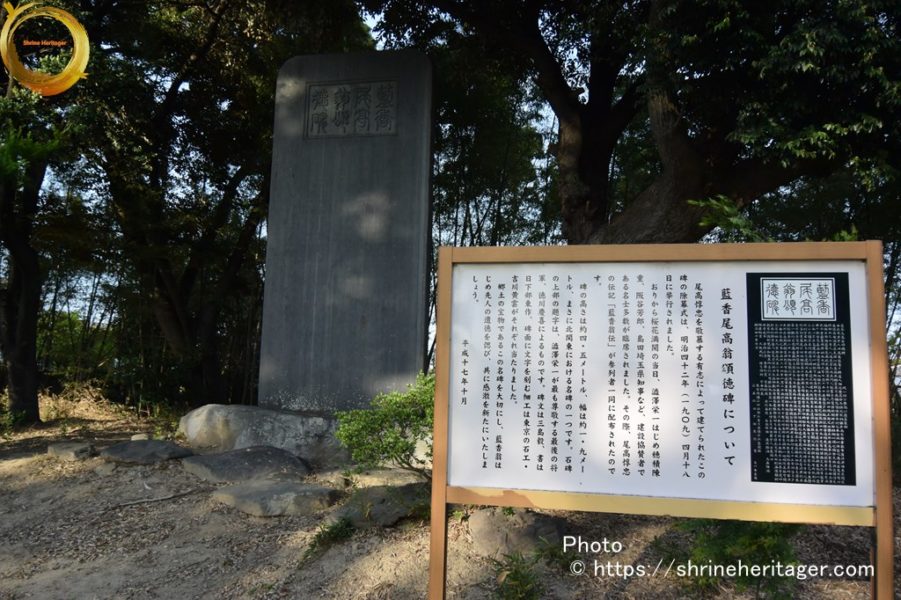
スポンサーリンク
神社にお詣り(Pray at the shrine)
I introduce the state when I visited this shrine.
About 6.2km north from Fukaya Station via Prefectural Road 14 About 20 minutes by car
The birthplace of the Meiji entrepreneur "Shibusawa Eiichi" on "Chiaraijima" is just east.
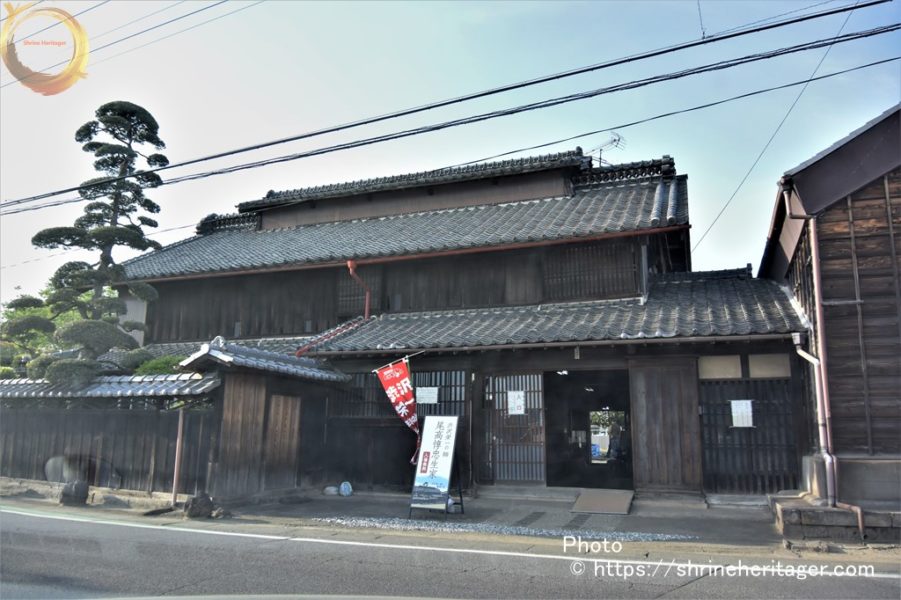
The place name "下手計Shimotebaka" is a rare reading and is read as "Shimotebaka".
According to the tradition, the place where the warlord cut his hand and washed his blood was called Chiaraijima, and the grave where his hand was buried was called "hand grave".Corrupt「手計」と伝わります
Turn left (turn west) at the Shimotebaka intersection, and on the right side you will see the Kashima Shrine company name and the stone lantern approach.
Arrive at Kashima shrine
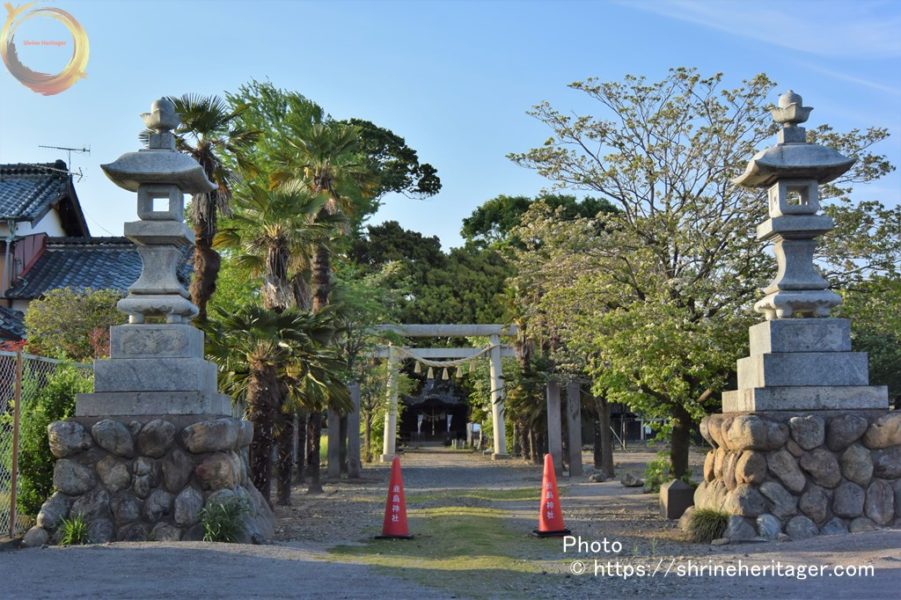
After giving a bow, go through the torii gate and you will reach the spacious precincts. As you can see in retrospect, the approach to the shrine extends straight southward from the shrine.
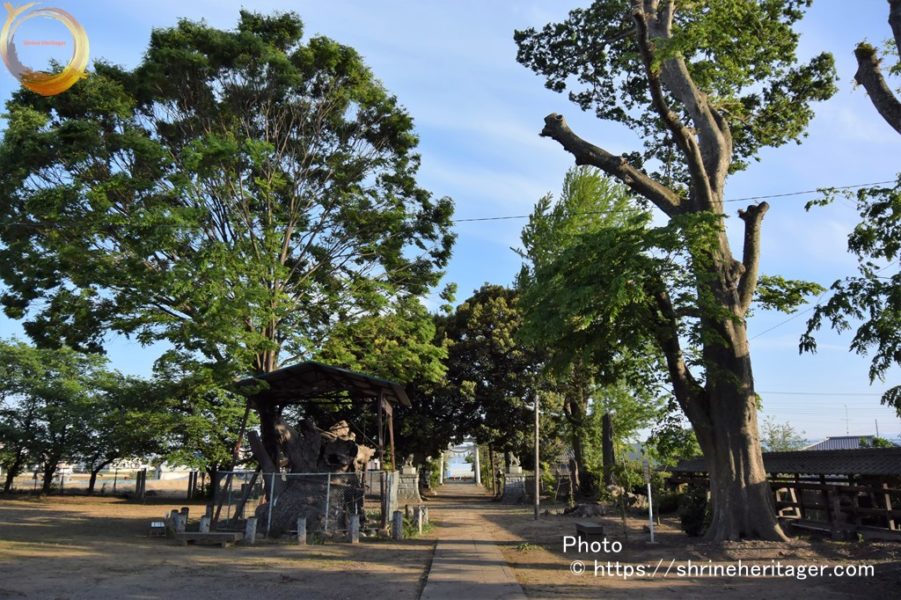
On the right hand side, the "snout of the big tree of the sea" which once sprang up of the divine water is surrounded by a wire mesh and protected by a roof.
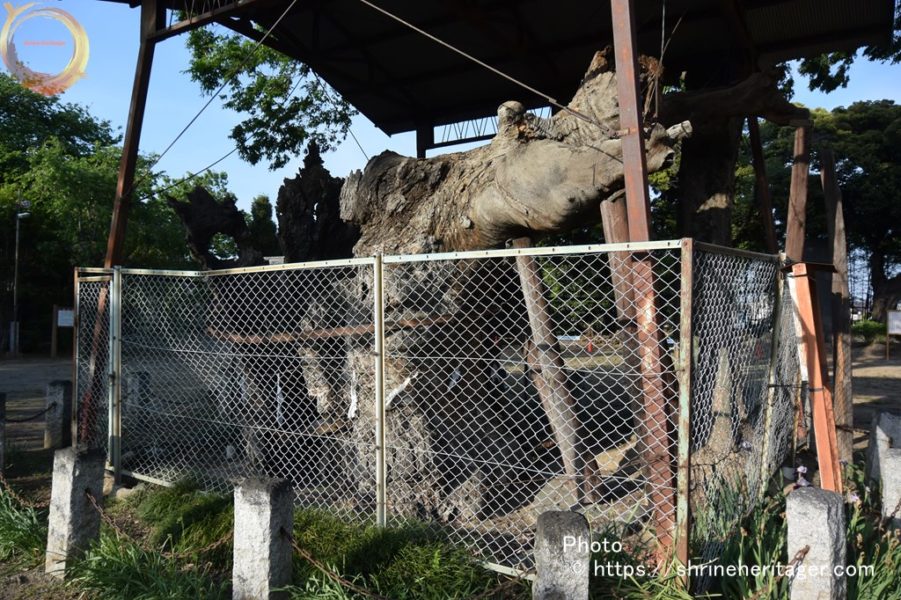
There is a shrine in front of the approach.

The shrine is filled with the amount of volatilization of Eiichi Shibusawa.
「鹿島神社 従三位 勲一等男爵 澁澤榮一謹書」
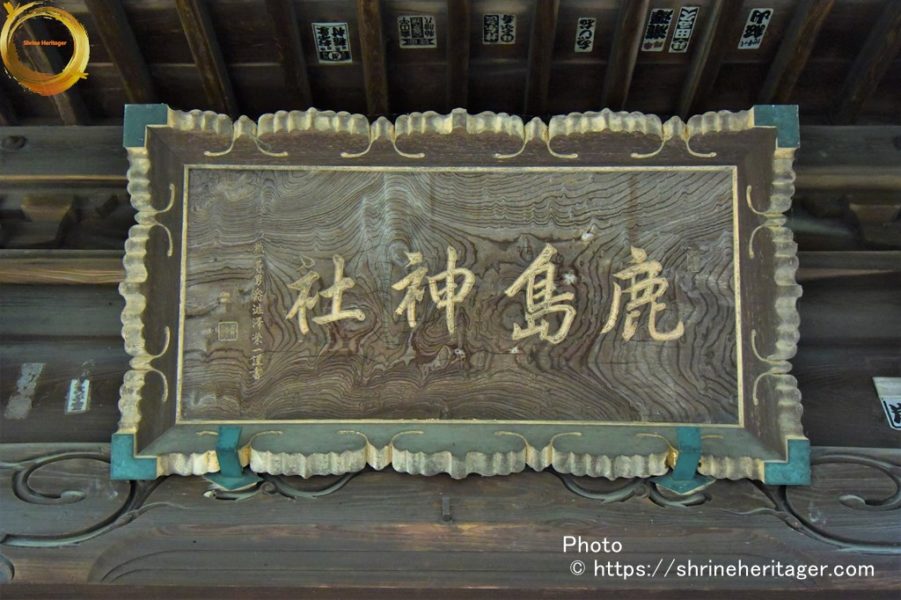
The amount of volatilization of Mr. Otaka Jiro (Han scholar and banker) who is the son of Mr. Otaka and the husband of Eiichi Shibusawa's bastard "Bunko" is called "Katsumi Restoration".
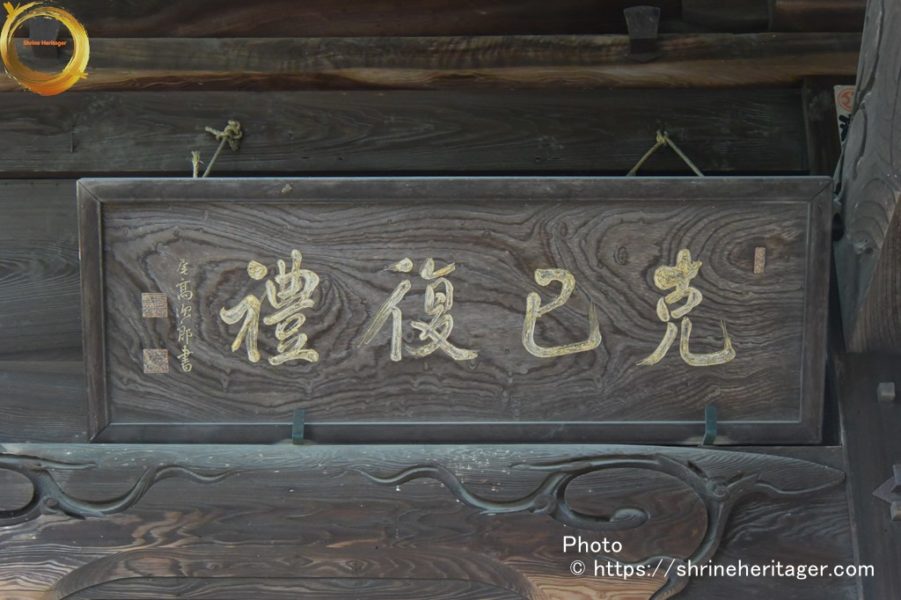
I wish you a change.
A prayer that puts both hands together, praying to reach the deity of the festival
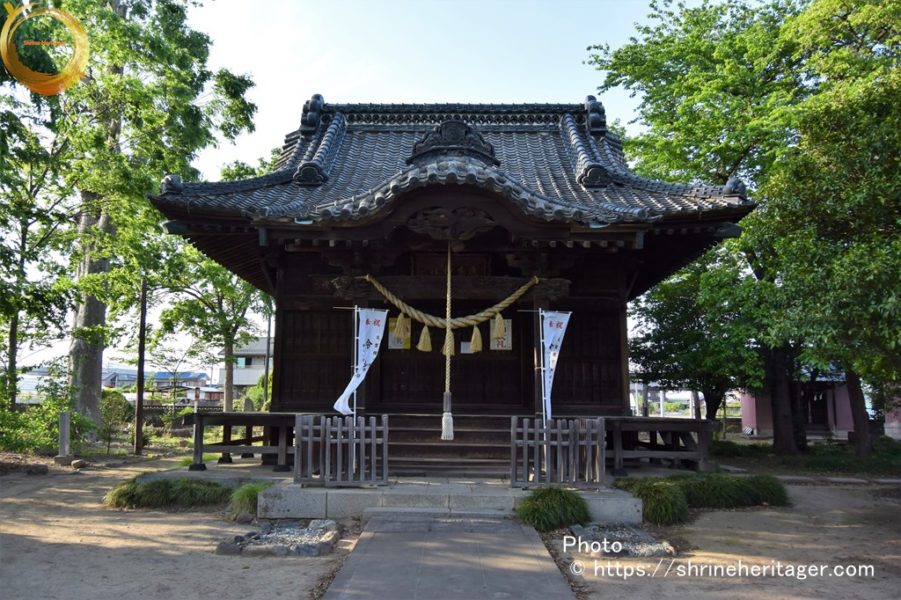
The main hall is in the undercering.
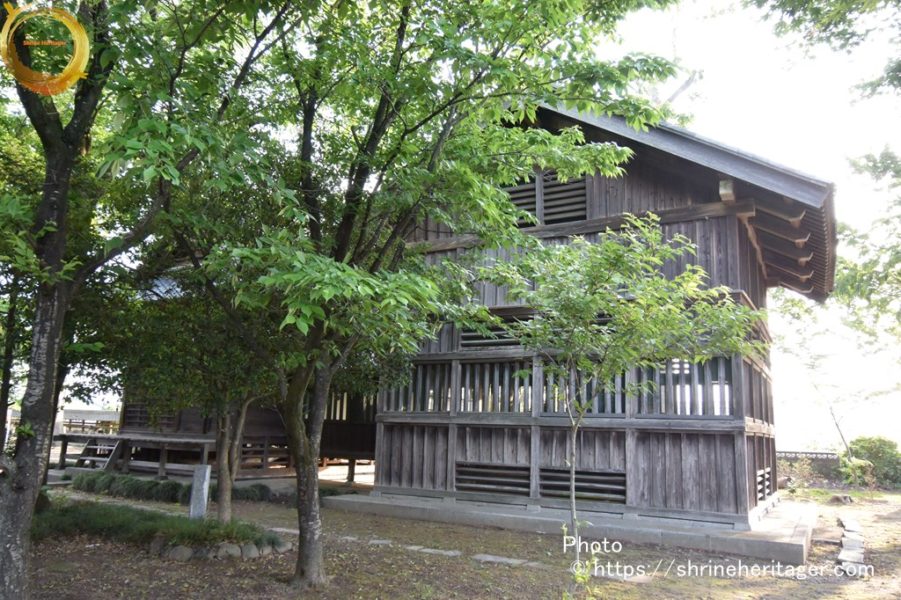
In the precincts of this shrine, "Kagura-den" is lying on the right side toward the main shrine, followed by a torii gate, and the left side of the "Yasaka Shrine" precinct is "Kashima Shrine".
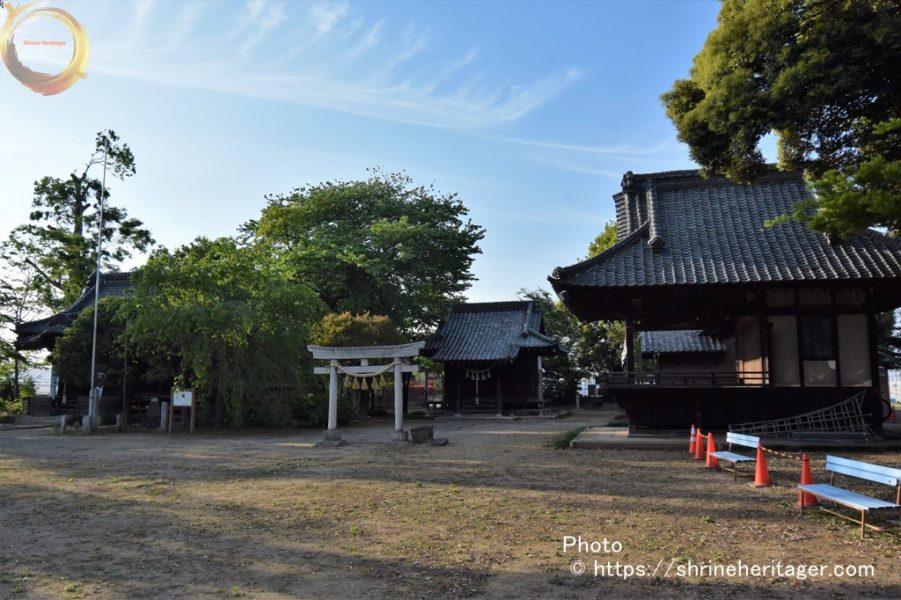
Kagura-den is big and splendid.
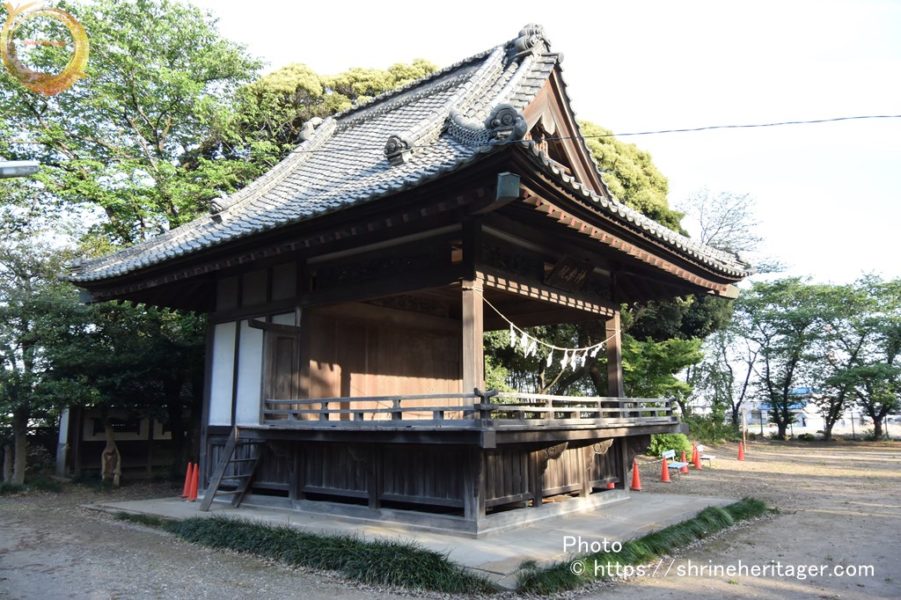
A torii gate is built in the center of the precincts, and Yasaka shrine (yasaka shrine) is built right next to Kagura-den, so you get the illusion that it looks like the precincts of Yasaka Shrine.
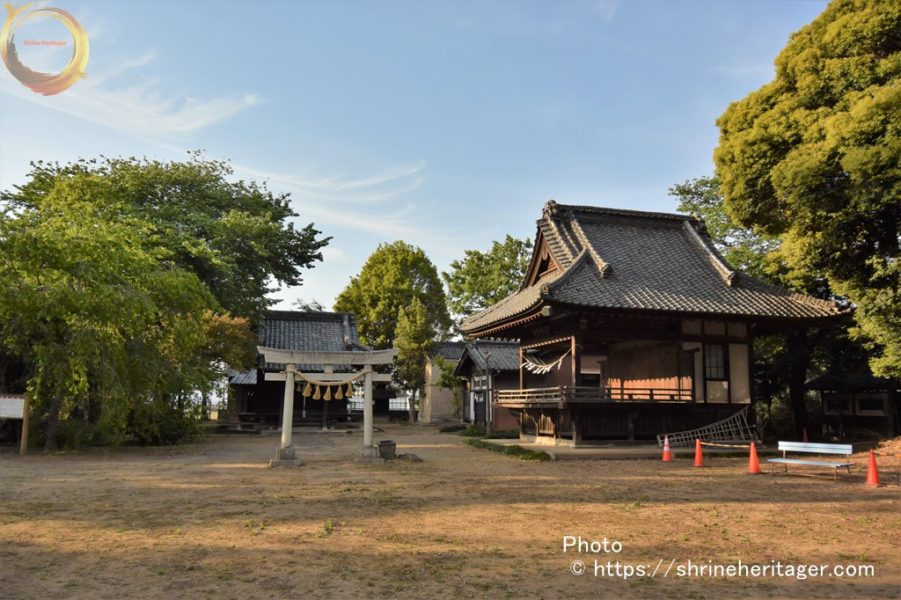
I'm going to visit the precincts and shrines in order.
八坂神社(yasaka shrine)
《主》素盞嗚尊(susanowonomikoto)
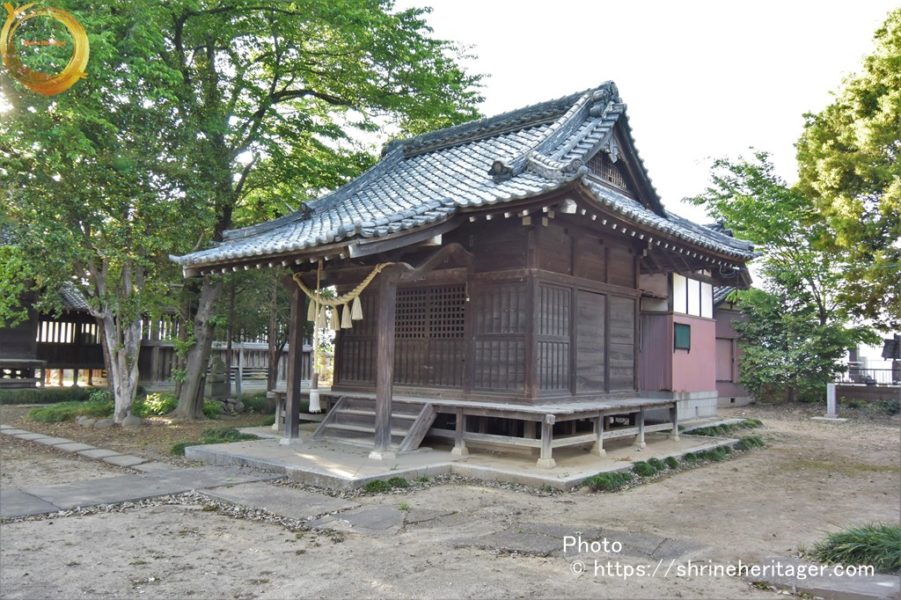
I will go to the hall of worship
There is a mikoshi in the shrine hall of Yasaka Shrine, and it is likely to be put out at the time of Yasaka festival.
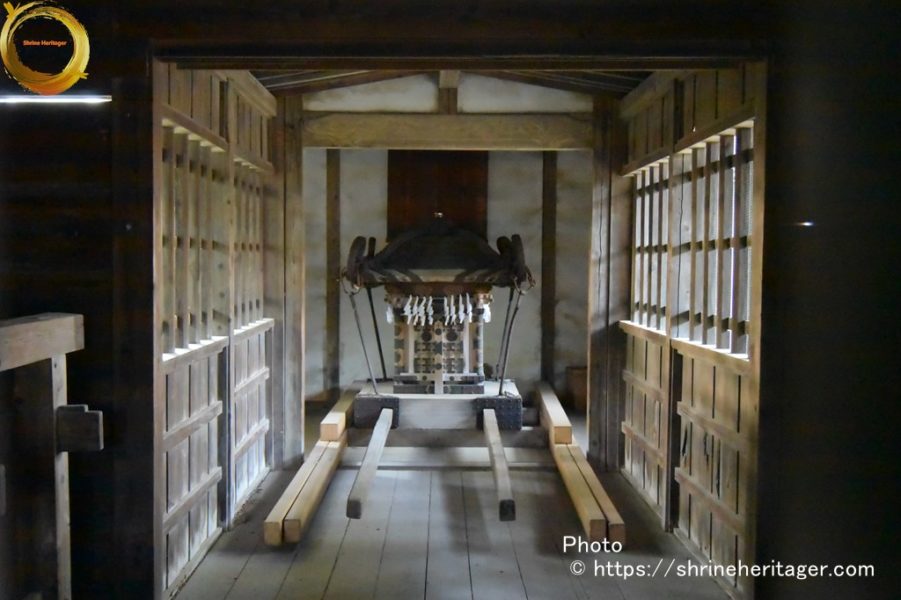
I wish you a change.
A prayer that puts both hands together, praying to reach the deity of the festival
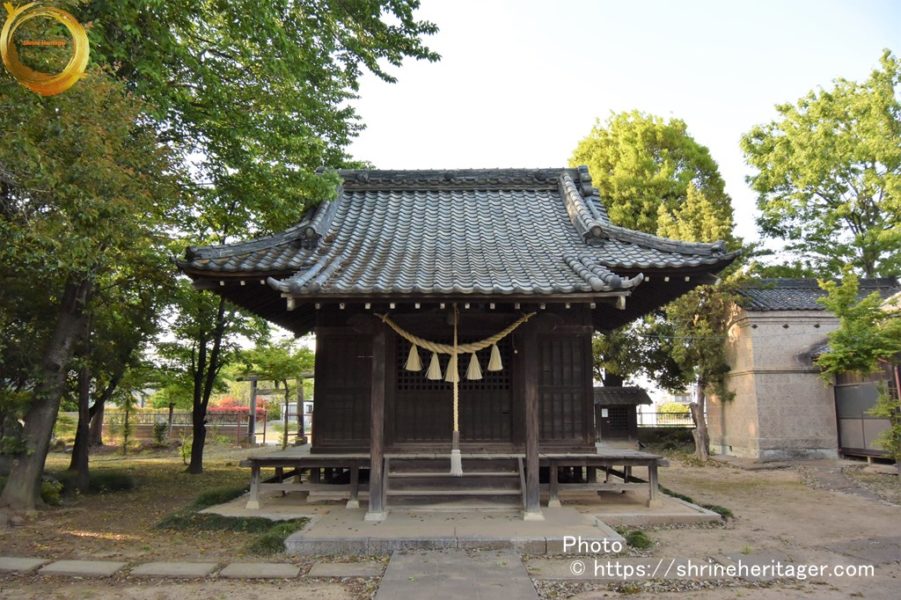
The shrine hall of Kashima Shrine is built just to the left.
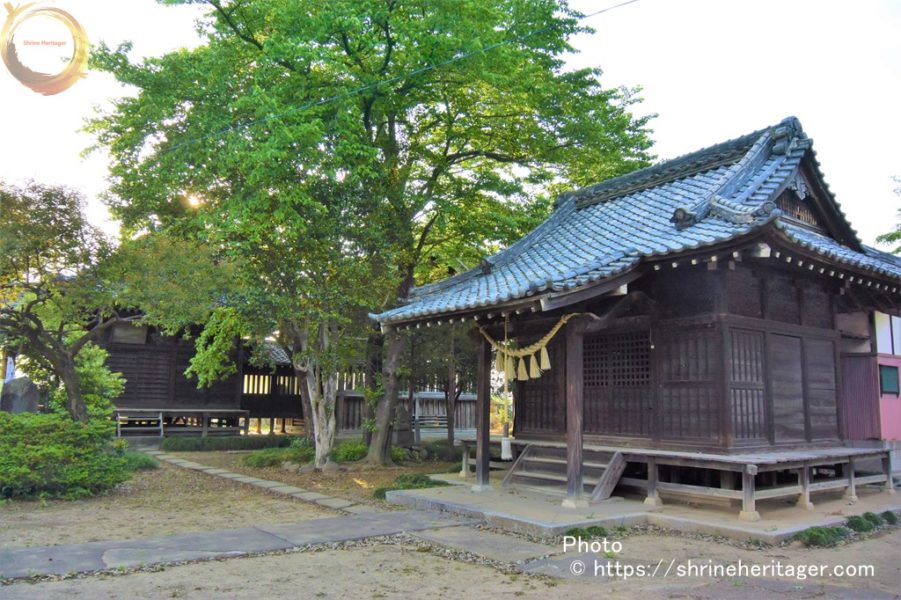
The west sun shines in the precincts, and it is a beautiful silhouette.
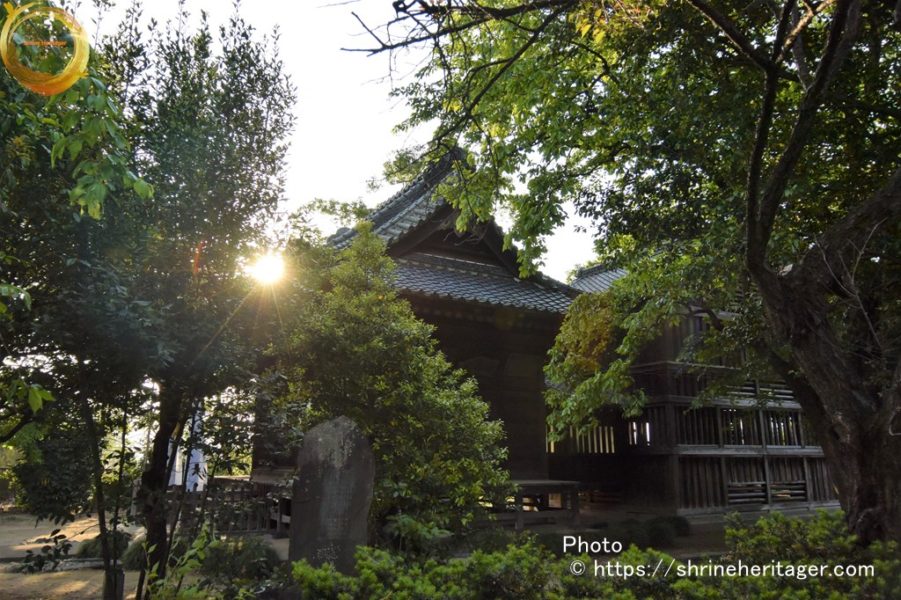

I'll go back down the approach, go through the torii gate, turn around and bow.
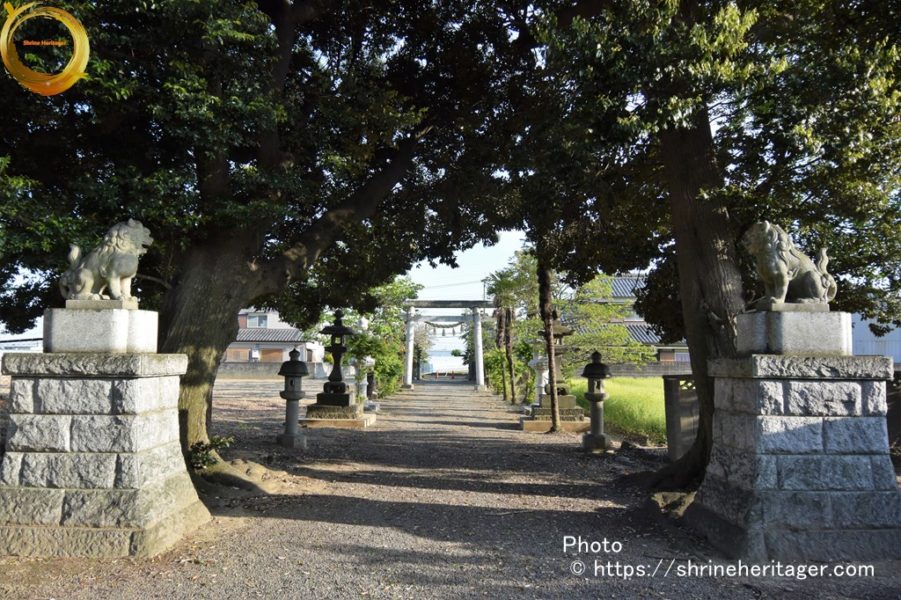
スポンサーリンク
神社の伝承(Old tales handed down to shrines)
I introduce the thing related to this shrine and the literature described.
About the well which is said to have sprung up from the cavity of a large tree of the persimmon which is said that eiichi Shibusawa's mother "Ei" draws the divine water and sheds the back of the patient
In the precincts, on the right hand side of the approach, there is a snout of a large tree.
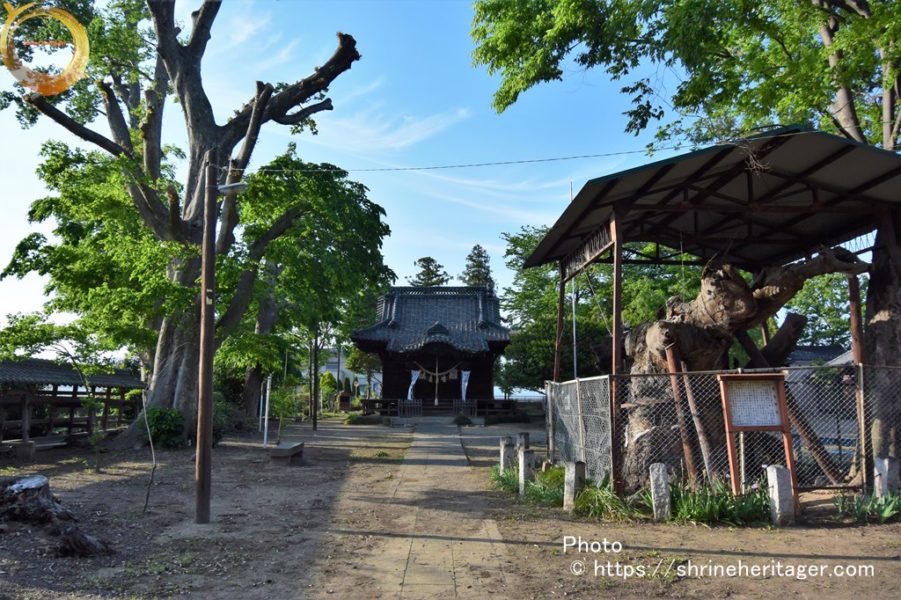
It used to be a huge tree with a trunk circumference of more than 10 meters, and it has been revered as a god tree for a long time.
Even now, when compared to the big trees and temizusha around, the thickness of the snout is clearly thick.
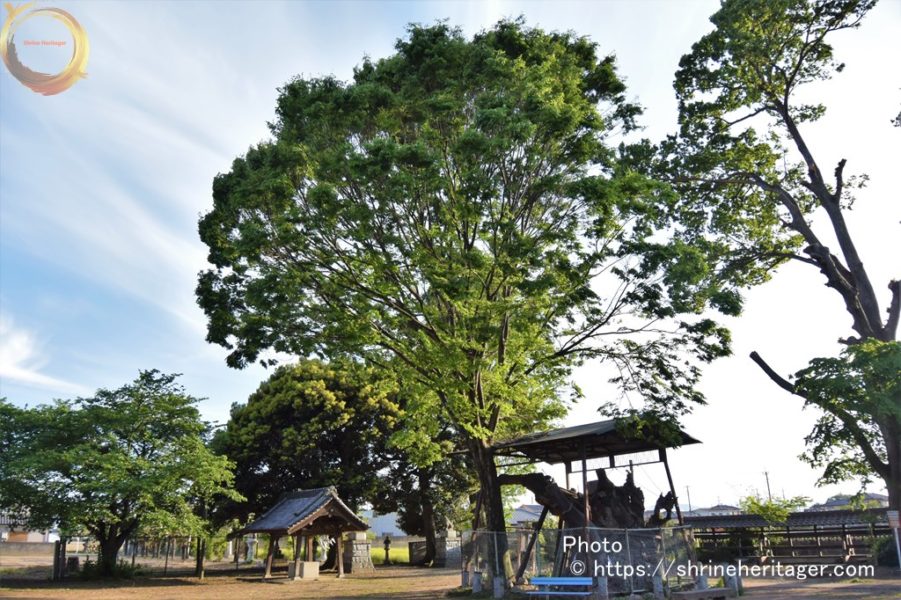
The good luck of the shrine is about this big tree.
At the end of the Heian period (794-1192),
Genji was told by a related god tree planted by a shrine man of The Hei family to pray for the reunity of the Hei family, and the kamiki that was the substitute for the god of Kashima became a huge tree, there was a cavity, and there was spring water from the root, and it was designated as a god water with the benefit which became like a well (designated as a naturalmonument)
According to the tradition of the shrine
Kansei-year (1789-1801) When this kamiki rang and examined, there was a well buried in the cave of Kamiki with dust serpents 蛻ser's shell), which was cleansed by divine thought and made kamii.
Around this time, among the neighboring villagers, the water of Kamii was divine water with the protection of God, and those suffering from disease received it, or when they cleansed themses themses with the divine water and prayed to God, there was a belief that there was a spiritual test.
For this reason, it is said that if you set up a bath bath house in the precincts and invite visitors to take a bath in Kamimizu, you will not be suspicious if you take away people's morals and pray with sincerity.
Eiichi Shibusawa's mother, Ei, is said to have pumped this divine water and shed the back of a sick patient.
In The 40th year of Meiji, some of the trees died and were cut down from the middle of the trunk.
鹿島神社(kashima shrine)
It is a shrine of the poor meter, and the flat amount of "Kashima Shrine" which becomes Shibusawa Eiichi volatilization is put up in the worship hall.
In the precincts, a monument to honor the achievements of Eiichi's teacher, Ranko Oha, is built.
The ten amount of this monument is based on the texts of Tokugawa Keiki (Yoshinobu) and Dr. Mishima's Literature (No. Nakasu).
It is now a kuchiki, but a commune bath was set up in Kamimizu, which was boiled at the base of the great mountain. Eiichi's mother, Ei, is reported to have taken this in and shed the back of a patient with Leprosy.
There is a tachibana (Tachibana) planted by Eiichi hand-planted lauren tree and eldest daughter Hozumi Utako, and there is a monument that tells its origin. Fukaya City Board of EducationFrom the precincts guide board
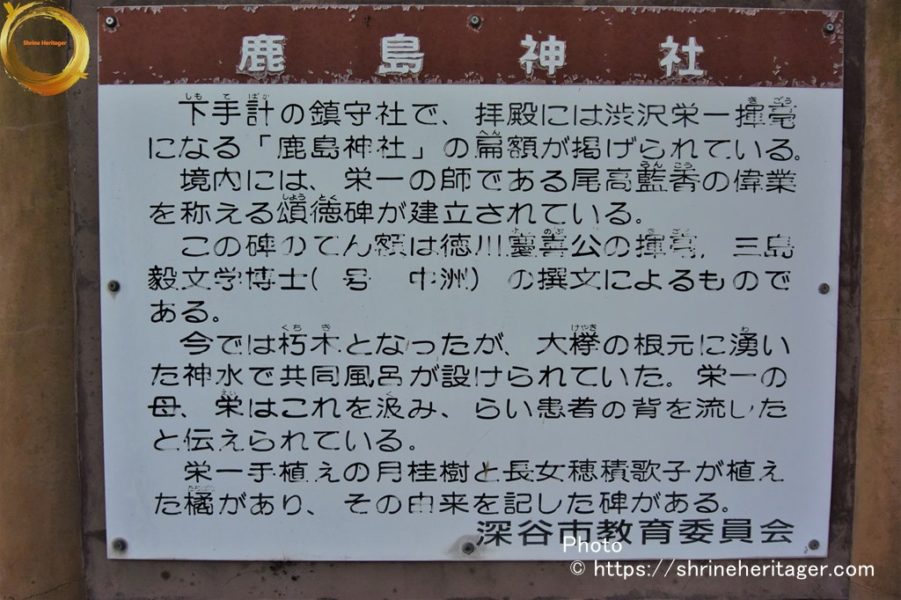
The "Musashikuni-no-Shimomura Kashima Shrine Namai Bathing House Figure" distributed to generals during the Edo period was re-published in April 1868.
The position of the present snout site The majesty of the giant tree of the samurai is drawn in front of the shrine hall.

"Rai" at Kashima Shrine (90-degree bow)
